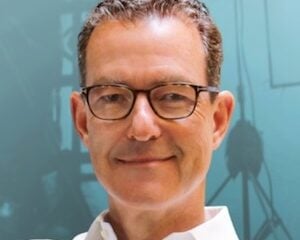James Day, 89
 James Day, a creative public TV leader in San Francisco and then New York, died April 24 [2008] of respiratory failure, according to a son, Ross.
James Day, a creative public TV leader in San Francisco and then New York, died April 24 [2008] of respiratory failure, according to a son, Ross.
He put San Francisco’s KQED on the air in 1954 — with Jon Rice, the station’s legendary first program director — and in 16 years demonstrated much of what “public television” could become, years before the Carnegie Commission put forth the new name for educational TV. He was president of KQED from 1953 to 1969.
The San Francisco station didn’t have the school and college funding that helped many local stations get their start, so it had little choice but to appeal to the home audience, Day once observed. It also had to innovate in fundraising, and barely survived with help from the first TV fundraising auction, invented by Day.
“There wasn’t a big national schedule. In those days, they had to do local programming,” remembers Richie Meyer, then an intern at KQED and later a g.m. in Seattle and Dallas.
The station made runaway hits out of such shows as Japanese Brush Painting and took chances with hosts including LSD advocate Alan Watts and conservative political host Casper Weinberger, Meyer says.
KQED’s Newsroom, a temporary evening news show, rushed onto the air in 1968 during a local newspaper strike, was replicated with Ford Foundation aid in several cities, bringing Jim Lehrer into TV at KERA in Dallas, and creating an influential style of conversational reporting.
He gained a national following for his long-form talks with longshoreman-philosopher Eric Hoffer and historian Arnold Toynbee and as host of weekly Kaleidoscope interviews with hundreds of major figures, from Buster Keaton to Aldous Huxley.
“My interviewing technique was to sit face-to-face so I could look into the person’s eyes, and I found that I was touching Eleanor Roosevelt’s knees, and that was a sensation I will never forget,” Day recalled in Jim Robertson’s book TeleVisionaries.
Fred Friendly, who managed the Ford Foundation’s major role in pubTV at the time, lured Day to New York in 1969 to become president of National Educational Television.
“I suspect if I had known what was going on on the East Coast I would not have left San Francisco,” Day said later in an oral history interview for the Television Academy’s Archive of American Television.
Day became head of WNET the next year when NET merged with the local pubTV station, WNDT.
The first years of WNET under Day “were an incredible golden age” of public TV, says Ralph Engelman, a historian of the field at Long Island University.
In his time at NET and WNET, it produced The Fifty-first State, a feisty nightly local news program that shared DNA with Newsroom, made landmark national programs including The Great American Dream Machine, Banks and the Poor and An American Family, and imported The Forsyte Saga, a forerunner of Masterpiece Theatre.
Day resigned early in 1973 after clashes with WNET Board Chairman Ethan Allan Hitchcock and as public TV hunkered down, under attack by the Nixon administration.
He later hosted and syndicated an evening talk show for public TV, Day for Night, and taught at Brooklyn College from 1976 until his retirement in 1988. In 1995, his history of the field was published: The Vanishing Vision: The Inside Story of Public Television.
Day is survived by his partner, Jeanne Alexander, and three sons. His wife, Beverley Elizabeth Hare, died in 1999.
The family said no funeral would be held, but a memorial service would be held in December [2008]. Memorial contributions may be made to the Meredith Day Johnson Fund, San Francisco Foundation, 225 Bush St., Suite 500, San Francisco, CA 94104.
RELATED ARTICLES
David Stewart writes about the collaboration of Day and Jon Rice to create KQED.
Obituary of Fred Friendly of CBS News and the Ford Foundation, 1998.
Jon Rice obituary, 2001.
Day’s successor at WNET, John Jay Iselin, died several days after Day in 2008.
RELATED LINK
Day interviewed by Ralph Engelman, a fellow historian of public TV, for the Television Academy’s Archive of American Television oral history series, accessible on YouTube.This is the first of five videos of the 4.5-hour interview to be posted.





